We met Kaitlin, a Minnesota medical mama, in her Meet a Reader post.

Since then, she’s been thrown into single mom life, and she left this comment on a recent post.
I’m curious how you cook for 2-3 people. I am either making way too much or not enough for my little group. Any tips?
-Kaitlin
Funny enough, the vast majority of my cooking life has been the sort where I’m feeding six people; I cooked most of the meals for my family as a teen, and there were six of us then.
And of course, I got married and had four kids, so I spent a lot of time feeding six people then as well.
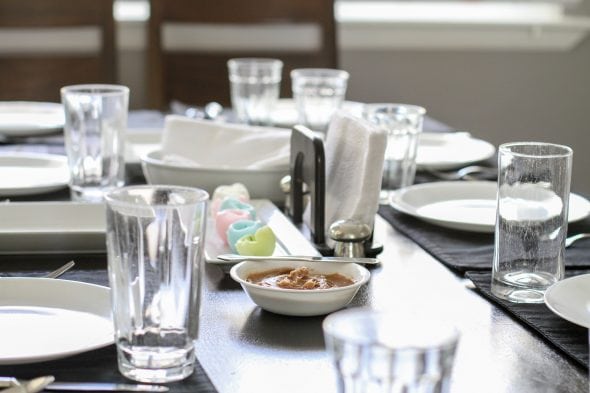
So, this cooking-for-two thing is pretty new to me, BUT I have been cooking for a three-person household for the last year.
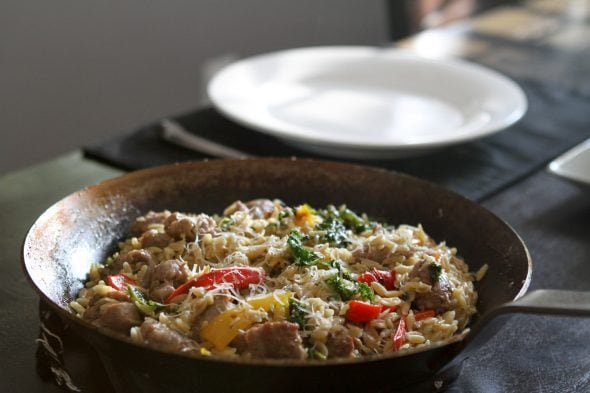
I’ll share a few of my strategies, but then I also want to ask readers for their advice because I know there are a number of people here who are cooking for even just one person!
1. Choose recipes that work well as leftovers
With a small household, most recipes are going to produce leftovers.
And not every recipe makes for great leftovers!
So, when I pick meals now, I really, really try to think about whether or not we will want to eat the extras as leftovers, and I use that as a guide in planning.
2. Make a whole recipe, freeze half for later
I used to make a big pan of stuffed shells, but there’s no way Zoe and I will get through a whole pan of those now.
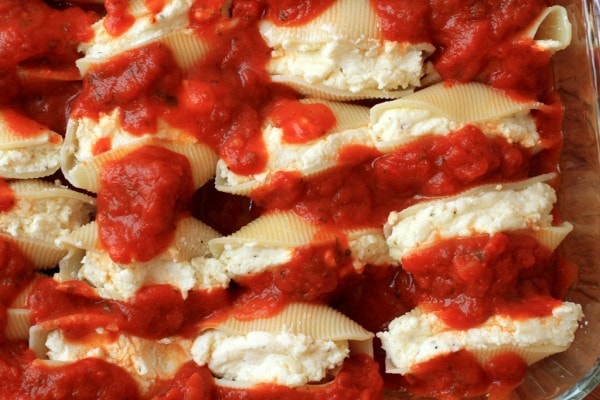
The same goes for a big batch of burgers or meatballs.
But for things that freeze well, it can still make sense to make a whole batch. For instance, when I mix up the meat for these burgers, I’ve been freezing a couple for a future meal.
Or if I make a batch of pulled pork, I divvy it up and freeze a couple of meals’ worth of meat.
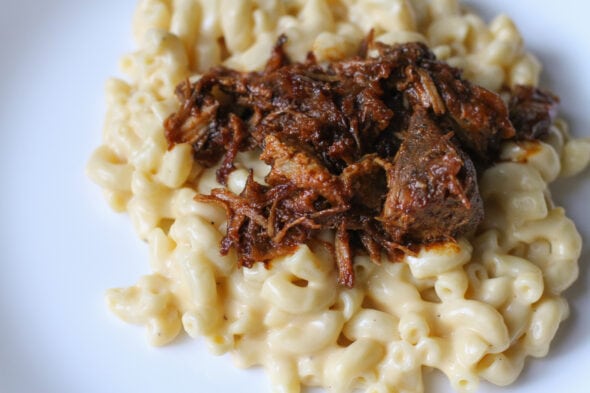
I’ve also been doing the same thing for baked goods; Zoe and I won’t eat a dozen muffins quickly enough, so I freeze half of them after I bake them.
3. If a recipe is easy enough, just halve it
I don’t know if this is logical, but for a very labor-intensive recipe or something with a long cooking time, it feels sort of annoying to go through all that work just to make a few servings.
(I would not halve a pulled pork recipe, for example!)
But for really simple recipes, like the baked ziti I made for Sonia and me last week, I don’t mind halving the recipe.
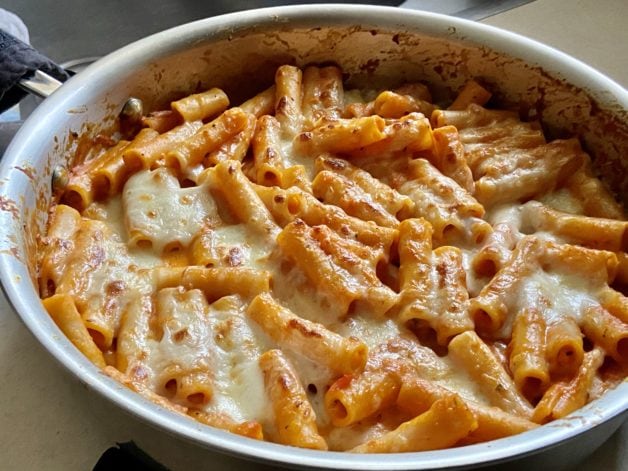
4. Prepare a whole recipe but cook only half
When I made chicken katsu last week with Sonia, I pounded and breaded a whole batch of chicken, but I only fried what we would eat that night. I put the rest in the fridge to fry up another night.
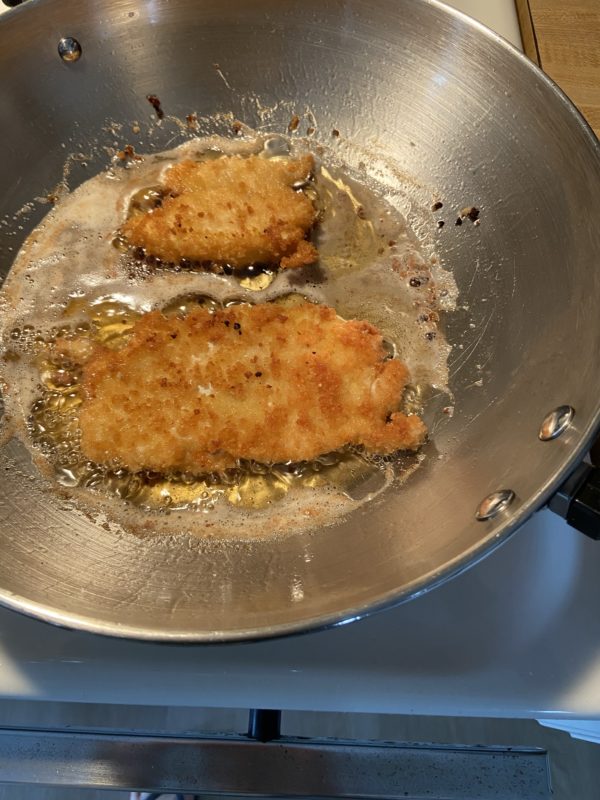
That’s a way to make leftovers feel a little bit less like leftovers; I’d much rather eat fresh-fried chicken than reheated cooked chicken. And it’s not that hard to fry the chicken and reheat some rice on a future night.
I do this if I’m making fried cornmeal mush too; I fry up only what we will eat that meal and then leave the rest in the fridge to cook up later.

When I make whole wheat pancakes for myself at breakfast, I cook half the batter and then I refrigerate the rest to cook the next morning. Fresh-cooked pancakes are way better than leftover pancakes!
5. Fill out the meal with something flexible
If you’re feeling iffy about how much food you’re going to need, and you want to err on the side of caution with the more expensive parts of the meal (like the meat), you can add insurance by making extras of flexible sides.
For instance, you can make one burger per person, and then everyone can eat potato salad/chips/watermelon until they are full.
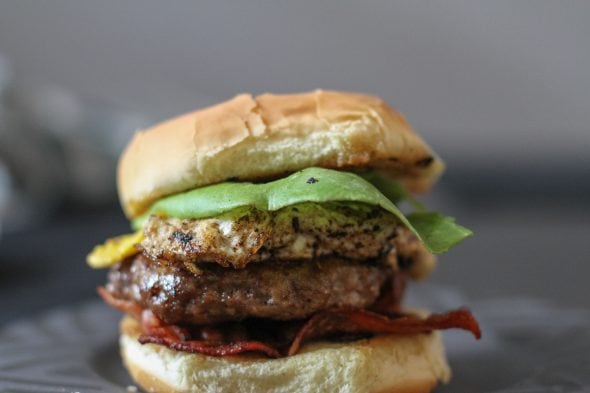
Or you could plan for a certain amount of chicken per person, and if someone is still hungry, they could have extra servings of sweet potatoes or rolls.
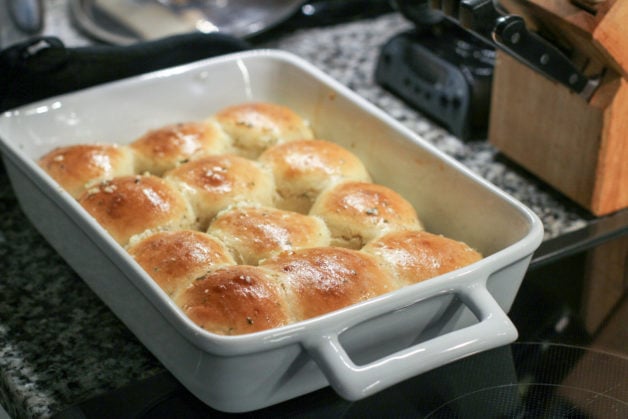
That could help you as you’re in the midst of learning. Speaking of:
6. Give yourself grace for the learning curve
If your household has suddenly shrunk, then you’re going to have an adjustment period where you will not get this right.
But it’s ok. You don’t have to be good at this right away; over time, you will figure it out!
Every time you make too much or too little, that’s just helpful data that you can file away for the future.
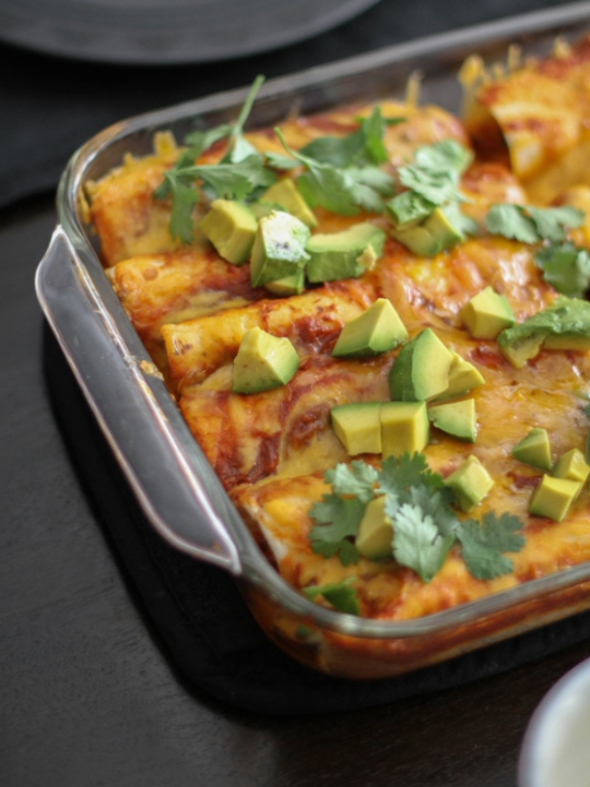
Also: I know this is not the case for everyone, but if your household is suddenly small for a hard/sad/traumatic reason, that’s all the more cause for giving yourself grace. Some nights might just call for sandwiches or cereal, and that’s ok.
Kaitlin, I know that all the changes you are experiencing right now probably feel overwhelming, and the cooking is just one piece of that.
I really struggled with making dinner for a while over this last year and a half, so if you are struggling, just know you aren’t alone.
But the super hard days are temporary; you will adjust and get to a new normal with time.
______________
Ok, readers, I’d love to hear your advice for Kaitlin (and I’ll be taking notes too!)

JEG
Saturday 24th of June 2023
A FB "friend" (I have never met this woman personally even though she lives in my town) on a local home cooking page cooks and displays beautifully. Her husband died a little over a year ago I think. Initially she was having a hard time making her beautiful dinner creations for herself alone; but she has come a long way and will display what she has created for herself (or possibly a lunch with a friend). Today popped up a recipe call Pasta alla gricia. I found a recipe for two at Bon Appetite April 21, 2015. Seems simple enough, light for a summer supper with a salad or fruit.--See below. I also have a simple recipe from America's Test Kitchen for lasagna rolls for 2. It makes about 6-8 rolls. I freeze half.
Both guanciale and Pecorino are quite salty; Leonardo Vignoli, the chef at Da Cesare al Casaletto, recommends undersalting the pasta water to give you more control.
Ingredients 2 Servings 1 tablespoon extra-virgin olive oil 6 ounces guanciale (salt-cured pork jowl), cut into ¾-inch pieces (Giada's recipe used bacon) 8 ounces rigatoni Kosher salt 2 teaspoons coarsely ground black pepper, preferably ground with a mortar and pestle 3 ounces Pecorino Romano, finely grated on the small holes of a box grater (about 3 cups) Preparation Step 1 Heat oil in a large skillet over medium-low. Cook guanciale, stirring often, until it starts to brown and crisp, 10–15 minutes; it will shrink dramatically as the fat renders. Transfer to a small bowl with a slotted spoon; reserve skillet (do not wipe out).
Step 2 Meanwhile, cook pasta in a large pot of boiling lightly salted water, stirring occasionally, until pasta is about halfway cooked (not quite al dente); drain, reserving 1 ½ cups pasta cooking liquid.
Step 3 Add ¾ cup pasta cooking liquid to reserved skillet and bring to a gentle boil over medium heat, swirling often to encourage drippings and liquid to emulsify, about 1 minute. Add pasta and cook, tossing often and adding more pasta cooking liquid as needed, until pasta is al dente and a thick, glossy sauce forms, 5–7 minutes (this second cooking is why you undercook the pasta initially).
Step 4 Increase heat to medium-high. Add guanciale, pepper, and two-thirds of Pecorino; toss well to combine and melt cheese. Serve pasta topped with remaining Pecorino.
Nutrition Per Serving Calories (kcal) 1290 Fat (g) 90 Saturated Fat (g) 35 Cholesterol (mg) 105 Carbohydrates (g) 86 Dietary Fiber (g) 4 Total Sugars (g) 5 Protein (g) 29 Sodium (mg) 3270
Laura
Sunday 18th of June 2023
For the past couple of years, my husband and I have lived about 100 miles apart so we could attend different schools. So, I've been cooking for one for most of those nights. To make things easier and less stressful with my school schedule (sometimes involves early mornings and/or late nights), I prep all of my meals for the week on Sunday and Monday. I eat overnight oats almost every morning, so I pre-mix the oats and protein powder once a week, then add milk to a few of them at a time before putting them in the fridge. I prep lunches for the week on Sundays. It's often turkey burgers, some sort of burrito or wrap, crockpot pork or chicken with rice and veggies or beans, or pasta with meat sauce. When it's time for dinner on Monday, I make enough to get me through the whole week (or at least through Friday). I'll often cook a meat in the crockpot during the workday, then make sides that evening. I know some people aren't fans of leftovers, but I don't mind them at all! Prepping this way also helps us save money, as I'm not tempted to eat out during the week when I have food ready for me in the fridge.
Kimberly
Friday 16th of June 2023
Thank you sooooo much, Kristen---I really need these tips! And thank you to all the Readers for their comments, once I have time to read them. Thank you, too, Kristen, for all the grace mentioned for those going through a hard/sad/traumatic reason for needing to change the number they cook for. After 24 years, it is for just one for me. Huge learning curve. Haven't gotten it down yet after months.
Kimberly
Friday 16th of June 2023
@Kristen, thank you so much. Means a lot!
Kristen
Friday 16th of June 2023
There are so many different hard reasons to have a smaller household; sending you love.
Kimberly
Friday 16th of June 2023
What I try to do, though, is what I did with our toddlers and preschoolers when they were "living on air" for awhile---which the pediatrician said was OK: Now I make sure that whatever I DO eat, when I feel like eating, is as healthy as possible.
SandyH
Thursday 15th of June 2023
I’m sure many of us grew up having regular weeknight meals, meaning a meat, “starch” and veggie/ salad. It’s hard to break away from this. I cook for myself, my husband, and my 87-year old mom, who lives down the block. We raised four kids, so I cooked for 6 for many years as well. I still meal-plan, and cook pretty much the same as always, but I’ve become proficient in halving recipes for meals AND baking. It’s really pretty simple. And if I goof up and there’s too much— no problem, leftovers for lunch. Sometimes we go out without my mom and I need to do a single meal for her. I’ve made chicken and rice for one, a hamburger, a chef salad with crackers, pork chop and sweet potato, chicken salad sandwich, etc.
lauren
Thursday 15th of June 2023
One joy of cooking for fewer people is that you may not need to cook as often! Cook ingredients that will work over multiple nights in different combos: Chicken breasts or thighs eaten with sauce the first night, as enchiladas or tacos, then in a green salad or chopped as chicken salad. Chickpeas soaked and cooked as a side dish, then for hummus then in salad. OR if you're grilling dinner one night, toss on a few of something to save for later in the week: beets, eggplants, potatoes, whatever.